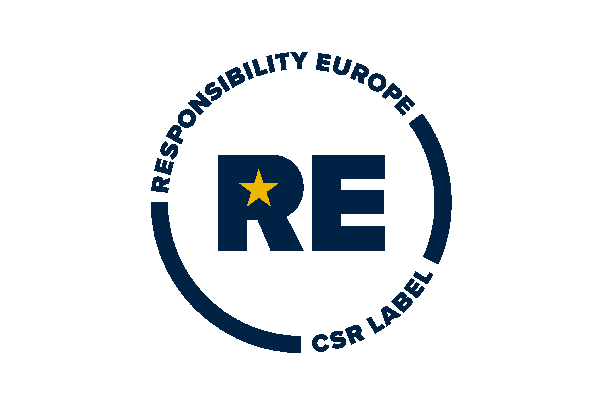Internal and personal communication: moving to a 100% remote working context!
We have moved quite abruptly from an idea of remote work to everyday implementation. Digital communication is not based on traditional codes and does not require the same resources. The stakes are high: it is a question of preserving the company culture while continuing to ensure its evolution. In this article, we will look at how digital communication is specific, how it can be adapted to the context of remote work for all teams, and the behaviours to adopt in order to excel in the way you communicate virtually.
Communication – what does this really mean?
The Latin term ‘to communicate’ means ‘to put in common’, even ‘to share’. So we communicate to share something with others.
Communication theorists have illustrated this sharing using the ‘communication diagram’: a sender shares a message via a channel with a receiver. The receiver can then send feedback back to the sender (respond verbally, return a questionnaire, etc.). However, there is “noise”, which can disrupt communication, such as poor video transmission or illegible fonts.
This pattern applies to all communication situations: man to man, man to animal, man to machine etc.
Communication pillars
When defining a relevant and effective communication strategy we refer to four pillars:
Objectives
These are generally classed under three categories
Cognitive – to make known
Affective – to make loved
Conative – to generate a reaction
Target(s)
Anyone receiving the communication
Message(s)
The information shared
Media/channels
The means of communicating with your target audience
The notion of budget (estimating the cost of the communication plan) and deadline (the communication plan is part of a calendar) should also be considered when defining this strategy.
These 4 pillars of communication are equally valid for offline, as for online communication.
What makes internal digital communication different?
The specificity of digital internal communication is based on three dimensions: its communication objective, the evolution of the role of the actors using this type of communication and the fact that its impact can be measured.
Unlike traditional media such as print, digital communication is in liquid form. Information is passed from one connected medium to another in a less institutional, more informal and conversational way. Its objective is not only to inform, but to make people adhere, by interacting with its audiences, in a simple and reactive way.
Digital communication is pushing organisations to move from top-down information to more interactive, two-way communication. This has an impact on the role of communication departments, whose job is changing. They are becoming community managers and are seeking to develop networks of ambassadors in this capacity. The traditional boundary between the internal and external spheres is becoming permeable. The codes of social networks are adopted by internal communication and social networks are used by communication teams as springboards for employee engagement. For example, companies are engaging their employees by running campaigns on Instagram, suggesting they post a photo of their travel destination, using the company’s hashtag.
Finally, the prerogative of digital is to have indicators that can measure the effectiveness of your actions.
Measure your effectiveness
Digital communication has a significant advantage: it makes it possible to measure communication actions quickly and easily based on predefined indicators (KPI’s).
For this, we have two indicators: ROA (Return on Attention) and ROE (Return on Engagement).
ROA : Return on Attention
The user does not buy the web content, (s)he offers attention.
Indicators in the case of internal communication:
- Number of visits to the intranet
- Number of views of videos
- Article opening rates
- Newsletter opening rates
- Number of employees connected to an online meeting
We talk about ROE, when the user chooses to take an action, in addition to sharing attention.
ROE : Return On Engagement
Indicators in the case of internal communication:
- Number of likes of articles/videos on the intranet
- Number of comments on the intranet
- Number of internal content shares
- Number of reactions (messages, emojis) during an online meeting
The results of these indicators make it possible to adjust and refine the communication actions included in the initial strategy, which is known as the “Test & Learn” method. Instead of analysing, defining and implementing a definitive strategy, we take the feedback from users into account and adjust the communication actions accordingly.
Turning the health crisis into an opportunity for digital communication services
By depriving itself of the classic multi-channel system, the communications department is obliged to reinvent its toolbox.
This learning curve also constitutes a great opportunity. Not all companies were technically prepared for remote working, indeed most tools are now in place, but it can still take time. The communication departmentmust accompany the teams to help them evolve more quickly in this direction.
And then tomorrow, we can be sure that employees will no longer express the same expectations. Certain communication habits will remain, such as webinars or video conferences. The frequency of teleworking will increase, so we will also need to adapt management and collaboration methods.
The (new) role of digital internal communication
The new configuration of 100% remote working presents three particular challenges for communication: preserving the corporate culture, maintaining team cohesion and dynamics, and ensuring the sustainability of this new remote culture.
To preserve the corporate culture, it is necessary to maintain the link with the management. In general videos have been most used to make the voice of management heard. Videoconferencing with all staff has also been adopted, even in large organisations. Indeed, solutions such as Teams or Zoom can accommodate from 1,000 to 10,000 participants. More conventional, but nonetheless effective, the weekly message has the advantage of simplicity.
If you already had a newsletter, take advantage of this to find a digital solution that is more suitable for interaction and adapt the summary to the circumstances. You can also put your money where your mouth is by adopting the principle of User Generated Content (UGC), and trust users to propose and/or publish content. This is a very effective way to successfully deliver relevant news from different businesses.
Team cohesion can be ensured by maintaining transversality. Confinement creates a greater need for connection. It is therefore necessary to create these moments of encounter, by organising highlights, and by inspiring team meetings that are both friendly and effective. Communication can also create new routines. Some companies have created “rendez-vous”: every day at noon, a post is published on the intranet feed sharing an employee experience. Less formal sharing can also take place: eating an ice cream can be a nice moment to share, as can introducing your cat, dog or fish to your colleagues. This type of content provides an excellent opportunity to get to know colleagues better and to consolidate the remote company culture.
To support change and make digital transformation a reality, the communication department can develop new resources. FAQs on COVID-19, guides on teleworking or cyber security instructions all provide vital information for managers and their teams. Remote culture requires a good command of the tools. By developing the use of different online tools, you will contribute to the digital transformation of your company. You will also succeed in this mission by coaching and involving managers.
Best practices for internal communication
Be clear and transparent
Base your communication on facts
Publish regularly and coherently
Avoid spreading rumours
Use as many visual supports as you can (photos, drawings, videos, etc.)
Our brains process visual supports 60,000 quicker than texts
Adapt your communication style to your media and think “mobile”
In 2019, about 50% of all world Internet content was accessed via a mobile device
Some best practices for your personal communication
Do you need to organize a remote meeting? Here are some tips to help you:
Preparing a meeting:
Choose the right tool (video, phone call)
Select a calm location, with enough light, but with a dark background
Test all your tools and support materials beforehand (microphone, slides, Internet connection, etc.)
Prepare the agenda and share it with all participants
During the meeting:
Clarify the meeting code (all participants mute their microphones)
Define who will speak when
Avoid multi-tasking during the meeting (reading mails, etc.)
After the meeting:
Debrief and distribute a meeting report
Ask your colleagues for feedback (organisation, timing, tools, etc.)
This unprecedented crisis, which companies and their employees are facing, is a form of disruption in internal communication. The forced transition to 100% digital creates many opportunities for the communication departments of tomorrow. The new normal is underway, so don’t wait for the shutdown to innovate and test all these new tools and practices that are available to you!
WANT TO RECEIVE OUR LATEST THOUGHT LEADERSHIP CONTENT?









